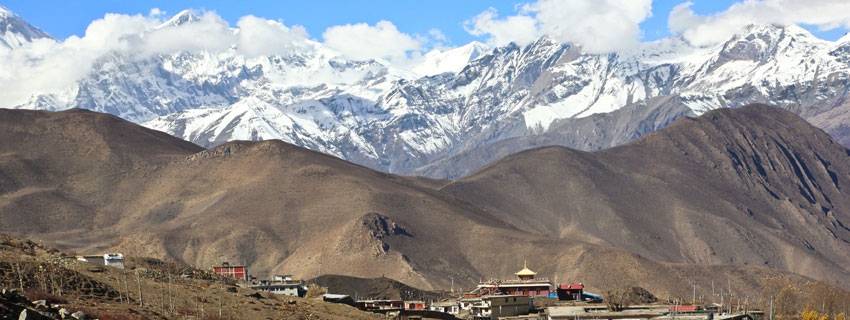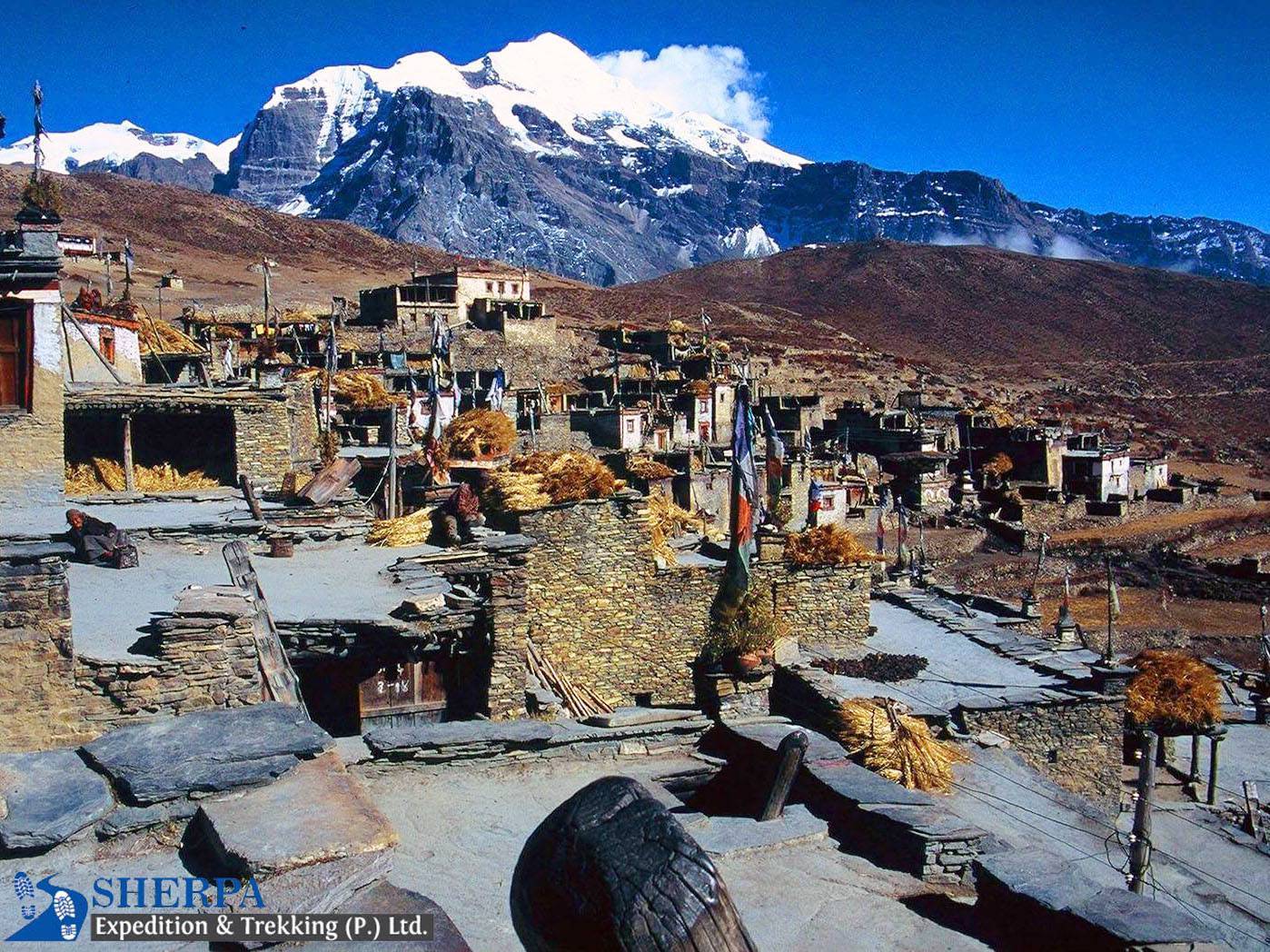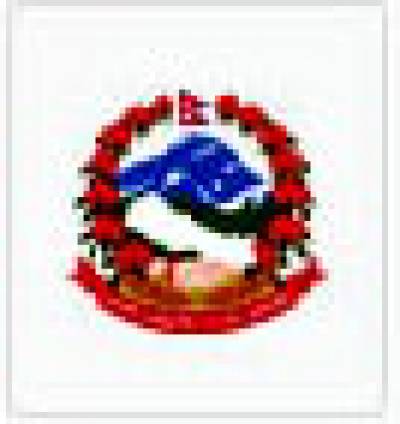NAR PHU VALLEY TREK
STEP BACK IN TIME TO THIS FORGOTTEN REGION.
The Nar Phu Valley Trek is a rare opportunity to explore one of the truly off-the-beaten-treks regions of Nepal.
This trek takes you to untouched villages rich in Tibetan culture, soaring peaks, deep valleys, and high altitude passes - and very few tourists. This area is unspoiled and its pristine wilderness will please the more adventurous trekker. Wedged between the well known Annapurna and Manaslu regions the Nar Phu valley has some fascinating views of these colossal peaks: Gangapurna (7455m), Annapurna II (7937m), Himlung Himal (4900m), and Tilicho Peak (7134m).
The trek to Nar Phu Valley exposes you to ancient untouched Tibetan villages rich in history and traditional Buddhist life. The mostly Mongolian people with their genuinely warm and welcoming smiles will warm your soul as you stop at the tea houses and lodges. The green pastures where yaks graze is in stark contrast to the surrounding landscape and towering mountains. Being a mostly Buddhist region you will see many chortens (Buddhist shrine/monument), gompas (monastery or temple), mani walls (stone walls that form a 6 symbol prayer), and Tashi Lhakhang Buddhist monastery in Marpha Village.
The Nar Phu Valley trek can be challenging at times due to some steep ascending trails, high altitudes, and narrow rocky terrain. The trail takes you through some lush forests and arid landscapes surrounded by magnificent peaks looming right before your eyes. Following the trail, you will suddenly drop into some hidden valleys with their unique style of stone buildings and Tibetan style architecture. The natural beauty and Tibetan Buddhist villages in this remote out-of-the-way place make this trek an adventure of a lifetime.
Key Features Of Nar Phu Valley trek
- Explore the lifestyle of the Mongolian Tibetan culture in this far off region near Tibet.
- View the amazing rugged and harsh landscapes with mountains shrouded in cloud.
- Surrounded by vast mountain ranges, such as Manaslu, Dhaulagiri, and Annapurna.
- Visit ancient Buddhist monasteries.
- Cross the high altitude Kang La Pass (5322m).
- Trek on the Tibetan plateau that extends into Nepal.
- A trail with ever-present Buddhist religious artifacts -chortens, Gompa, Mani walls & Tibetan prayer flags.
ITINERARY
Day 1 : Arrival in Kathmandu and transfer to hotel.
Sherpa Expedition & Trekking staff will be there to greet you at Tribhuvan International Airport and take you to your hotel, followed by a briefing covering information, dos and don’ts of your trek. Your safety and comfort are paramount.
Day 2 : Drive from Kathmandu to Jagat (1,300m) Duration: 7-9 hours.
After an early breakfast we leave Kathmandu heading toward Besisahar through a lush green landscape and via numerous villages and farms. We first reach Besisahar Village and then continue until we reach Jagat where we stay the night.
Day 3 : Trek from Jagat to Dharapani (1,860 m) Duration: 5-6 hours.
Today our trek begins as we follow the descending trail from Jagat until we reach the river and then continue through farmland where locals grow corn, barley, rice, and potatoes. Along the trail, we pass through bamboo and rhododendron forests before having to ascend to a ridge where we have spectacular views down into the valley and of waterfalls cascading into the river, and views of the magnificent towering Annapurna Mountains. We follow a rock-strewn trail that requires some effort before descending to the river that leads to Tal Village and a little further on Dharapani where we stay the night.
Day 4 : Trek from Dharapani to Koto (2,600m) Duration: 5-6 hours.
This morning we start our trek to Bagarchhap, about 1.5 hours taking us through pine and fir forests until we reach the village where there is prominent monastery painted white. We follow the steep trail, with signs of landsides, for another hour before we reach Danaque. Looking skyward we are blessed with some amazing views of Lamjung Himal, Annapurna II, and Annapurna IV (7,525m). We continue for 1.5 hours until we reach Latamarang Village (2400m) where we stop for lunch. After lunch we continue on and on occasions get a glimpse of the enormous Annapurna II peak (7937m). We eventually arrive at Koto Village where we will stay the night.
Day 5 : Trek from Koto to Meta (3,560m) Duration: 6-7 hours.
This morning we have to register for our restricted area permit and then continue along the trail along the riverbank until we reach of Soti Khola Village located on the banks of the river. The trail continues passing pine forests, rivers before crossing a suspension bridge before ascending to Meta Village situated on a vast open plain on the Tibetan Plateau from where you have fantastic views of Annapurna II and Lamjung Himal.
Day 6 : Trek from Meta to Phu Gaon (4,080m) Duration: 6-7 hours.
Today the undulating trail takes us over several suspension bridges and after 4 hours we reach Kyang Village and its ancient ruins where ruined forts of the Tibetan Khampa people who once fought with Nepal and later settled. We pass Phu Khola until finally, after 3 to 4 hours reach the Phu village of Phu Gaon where we stay the night.
Day 7 : Acclimatization and exploration of Phu Gaon (4,250m)
Today is a rest day and a place where we acclimatize to the higher elevations, with opportunities to explore the villages and mingle among the various ethnic groups in this town, such as Lama, Gurung (also called Tamu), and Ghale (known as Lila). It is interesting to see how they survive in this region and farm in this rugged land. The views of Himlung Himal and other snow-capped peaks are in stark contrast to the mostly sparse surroundings. Tonight we stay in Phu Gaon.
Day 8 : Trek from Phu Gaon to Nar (4,110m) Duration: 6-7 hours.
Today the trail descends passing many streams and crossing numerous suspension bridges until we reach Nar Village that has several Buddhist monasteries and some awesome views of Pisang Peak (6092m) and other snow-clad mountains. Tonight we stay at Nar with its many stupas (dome-shaped Buddhist shrines) and incredible stone buildings.
Day 9 : Acclimatization and exploration of Nar Village (4,110m)
Today it is necessary to acclimatize and prepare for the higher elevation at Nar. Health specialists recommend staying active while acclimatizing, so today we will wander around the village and check out its unique Tibetan cultural icons and meet the very friendly local people with their warm smiling faces. Tonight we stay at Nar.
Day 10 : Trek from Nar to Nawal (3675m) via Kang-La Pass (5,306m) Duration: 7-9 hours.
An early start today begins with a long uphill trek to Kang La Pass. The view from here of the Annapurna Massif is breathtaking. Heading through the pass we continue on down to Nawal Village where we stay the night.
Day 11 : Trek from Nawal to Manang (3,519m) Duration: 3-4 hours.
Today we leave Nawal for Manang and on the trail pass through the mountainous village of Paugh perched on the side of a mountain with the usual stone buildings. The vast Annapurna Mountain views in the background of Paugh can be seen in the distance. At the small village of Mungi we connect with the main Annapurna trail and continue until we reach Manang where we will stay the night.
Day 12 : Trek from Manang to Yak Kharka (4,018m) Duration: 4-5 hours.
Today we head off on a 10.4 km uphill trek of around 3 to 4 hours and head to Yak Kharka passing through juniper forests, and will see yak grazing in the pastures. On the route we pass the only teahouse at Thorong Khola. The vegetation at this elevation is mostly juniper trees. Depending on the conditions we may decide to go a little further and stay the night at Letdar.
Day 13 : Trek from Yak Kharka to Thorong Phedi (4,560m) Duration: 3-4 hours.
Climbing higher we gradually get used to the higher altitude. We follow the east bank of the Jarang Khola and along the trail view steep bluffs before reaching Thorong Phedi (meaning foot hills). If we are lucky we may see the famous blue sheep and even a snow leopard! This is also home to Lammergeyer (bearded vulture). There is also a belief the mythical griffons are in this region!
Day 14 : Trek from Thorong Pedi via Thorong La Pass (5416m) to Muktinath (3,802m) Duration: 7-9 hours.
Today is most likely the toughest day of the trek, hiking for around 7-8 hours. The higher altitude contributes to the degree of difficulty and sometimes strong winds in these upper regions. Along the trail we may pass sheep, yaks, and merchants transporting their goods. Once we reach Thorong La Pass we will be rewarded with breath-taking views of Annapurna, Gangapurna, and the eye-catching peak of Khatungkang (6484m). Leaving the pass we descend around 1600 meters and the brilliant Dhaulagiri (Dhaula Giri, meaning “White Mountain”) is the highest mountain that is entirely in Nepal. The trail is more undulating and relatively easy before we reach Muktinath where we stay the night.
Day 15 : Trek from Muktinath to Jomsom (2,750m) Via Kagbeni; Duration: 5-6 hours.
From Muktinath, we pass through lush meadows, fruit trees, and streams passing through Kagbeni before we reach Jomson in the Kali Gandaki valley. Kagbeni has a well-deserved reputation for its horticulture industry. Tonight we stay at Jomsom.
Day 16 : Fly from Jomsom to Pokhara (8,50m) & transfer to hotel; Duration: 30 minutes.
Annapurna and Dhaulagiri. After arriving at Pokhara we will head to our Lakeside hotel and after check-in can explore Phewa Tal (lake) and admire Mt Machapuchare (Fish Tail) in the distance. Alternatively, we may wish to take a boat ride on Phew Tal – Nepal’s second largest lake, or meander along Lakeside and do some shopping. Tonight we can visit some of the clubs and bars to celebrate our return to civilization.
Day 17 : Drive from Pokhara to Kathmandu; Duration: 6-7 hours.
Today we head back on a 6 to 7-hour drive to Kathmandu with many fond memories of Nepal and its unique culture and geography. These memories will last a lifetime!
Day 18 : International departure from Kathmandu Airport.
Sherpa Expeditions & Trekking staff will transfer you to the airport for your final departure from Nepal. We hope that this epic trek will be firmly ingrained in your memory and will be enough to prompt you to consider your next trek with us!
SERVICES
Cost Included In Your Package
- Airport picks up and transports by private Car/Jeep.
- Two night’s standard twin sharing Hotel in Kathmandu with breakfast.
- Three meals a day (Breakfast, lunch, and dinner) during the trek.
- A highly experienced, helpful, knowledgeable, friendly, English speaking well trained, Government license holder guide with all his salary, food, drinks, accommodation, transport and insurance.
- Strong, helpful Sherpa porters with proper safety equipment and walking equipment, his salary, food, accommodation, and insurance (one porter for two people).
- All necessary papers including Annapurna conservation permit and TIMS card (Trekking Information Management System)
- Trekking Lodge (Tea House) accommodation during the trek.
- Use of sleeping bag, down jacket, duffel bag and walking poles (if you don’t have your own, to be returned after trip completed).
- Nar Phu valley special permits
- Transportation from Kathmandu – Besishar- Chame by sharing Jeep & Pokhara - Kathmandu by local bus
- Appreciation of certificate after the successful trek.
- Emergency rescue operation assistance in arranging in case of complex health conditions (funded by your Travel Insurance)
- All government, Local taxes/ vat and official Expenses
- Oxygen meter to check your pulse and oxygen saturation and heart rate twice daily (Very useful to check Altitude Mountain Sickness(AMS) symptoms) which will ensure your health during the trek.
- Assistant guide for groups of 8 or more people.
Costs Exclude
- Meals whilst you are in Kathmandu & Pokhara - lunch, and dinner.
- Nepal entry visa fee (easy to obtain the visa on arrival at Tribhuvan International Airport – Kathmandu). $30 USD for 15-day, $50 USD for 30 Days, and $125 USD for 90 Days visa.
- Personal travel and medical insurance.
- International airfare.
- Your personal expenses.
- All the alcoholic and nonalcoholic, soup, tea, coffee, hot chocolate, cocoa, mineral water, extra food, cold and hot drinks on trek ( i.e. those you choose to purchase along the way and during evenings in the tea houses)
- All desserts & sweet things like chocolate, cake, pie, pudding.
- Hot shower and battery charging at the tea houses.
- Tips for the guide, porter, and driver (tipping is expected)
- Excess baggage of more than 10 kg for Jomsom flight.
- NOTE: If you return earlier from the trek due to sickness or any problem, the money you paid for the flight, hotel, mountain room, food, etc. is nonrefundable, and you will need to bear the expenses for the hotel, food, etc. in Kathmandu yourself.
EQUIPMENTS
The following information will give you some idea about what you need to bring for the trek. It is important you do not forget the essential items, as this will determine your comfort and safety on the trek. Equally important is that you do not burden yourself with unnecessary equipment on the trek.
General
- All season sleeping bag and down Jacket (we can provide if you need it, but has to be returned after the trek)
- Duffle bag ( Sherpa Expedition & Trekking provide duffle bag during the trek but has to be returned after the trek)
- A wind and waterproof thin layered jacket (a must-have for morning and evenings above 3,000m)
- Daypack
Upper Body- Head / Ears / Eyewear
- A pair of half gloves
- A warmer hat that covers the ears
- Sunglasses
- Neckwarmer
- Sunscreen (35 to 60 SPF)
- Headlamp and an extra set of batteries
Hands
- A pair of half gloves for walking poles(if you prefer)
- Warmer shell gloves and liner
Upper Body
- long sleeve t-shirts
- Thermal tops
- wool jacket or pullover
- Sports bras for women and girls
- Water and windproof shell jacket
Lower Body
- Thermal underwear (especially trousers)
- windproof and waterproof trousers
- warmer trousers
- Comfortable trekking pants
- Extra casual sport pants
Footwear
- A pair of good waterproof trekking boots
- Pair of sandals
- 4-5 pairs of woolen socks
- Sock liners
- Light shoes and sneakers
- First Aid Kits and Medicines
- Assorted adhesive bandages (fabric preferred)
- Blister treatment cream or similar
- Insect / anti-itch ointment
- Ibuprofen or other pain-relief medication
- Diamox (125mg to 250mg tablets for altitude sickness)
- Warps, splints, and wound coverings butterfly bandage
- Water purifying pills
(Note our company guide will carry the medicines and first aid kits during the trek. However, we recommend you bring your personal first-aid kit as well)
Miscellaneous - but must useful on the trek
- 4 passport size photos with original passport
- Water bottle & filter
- Flight details (please make a copy and leave one pic at our office in KTM because in case you want to change your flight date)
- Bathroom kit (conform, should be included toilet paper, plastic bags, hand wipes, towel, and soap, etc.)
Extra things
- Comfortable trekking poles
- Quality energy dry foods (up to you)
- Power bank and music players
- Camera (memory card, chargers, and extra batteries)
GOOD TO KNOW
Accommodation
You will be accommodated in 3-star hotels in Kathmandu. During the trek, we will be staying at lodges/ teahouses. You may find comfortable and better quality teahouses - having attached bathroom at lower levels- until you reach higher elevations, where the accommodation is more basic with bare necessities.
Meals during the trek
In Kathmandu, your hotel includes breakfast, whereas all meals (breakfast, lunch, and dinner) will be provided during the trek. A staple food of the Manang & Mustang regions is potatoes, oats, buckwheat, Sherpa stew, and Tibetan bread. Sherpa’s’ started farming potatoes when the first seeds were introduced to the region in the early 90s. There is a limited choice of food at higher elevations and except many potato dishes. Potatoes are high in carbohydrates – an excellent source of energy needed at high altitudes.
Transportation
We use a private car for sightseeing and for the airport to hotel pick and drop off. We use public transportation or local buses during the trek.
Physical fitness
This can be a challenging trek where you often have to walk 6-7 hours a day. You need past experience of hiking or trekking but if you have done any kind of trekking activities then it is always a plus! We have met people from all walks of life, shapes, and sizes who have completed the trek. The only difficult part is when altitude sickness strikes and the effect that it can have on your body. Before leaving for Nepal it is good if you can prepare yourself physically by increasing your stamina and oxygen intake.
Remember – The better prepared – the more enjoyable your trek!
MAP
PHOTOS/Videos
Departures
Select a departure month
Fill out the form below and a Travel Expert will reach out to create your perfect tour.
FAQS
What is the Nar Phu Valley Trek?
The Nar Phu Valley Trek is a remote and off-the-beaten-path trekking route in the Annapurna region of Nepal. It takes you through the hidden valleys of Nar and Phu, which were restricted to tourists until 2002. The trek offers a glimpse into the untouched Tibetan culture, stunning landscapes, and breathtaking views of the Annapurna and Manaslu mountain ranges.
How long does the Nar Phu Valley Trek take?
The duration of the Nar Phu Valley Trek can vary depending on your itinerary and walking pace. On average, it takes around 10-18 days to complete the trek. However, this can be customized according to your preferences and fitness level.
Is the Nar Phu Valley Trek difficult?
The Nar Phu Valley Trek is considered a challenging trek. The trail involves steep ascents, high altitudes, and some technical sections. It is recommended for experienced trekkers with a good level of fitness. Prior trekking experience and acclimatization to high altitudes are essential.
When is the best time to do the Nar Phu Valley Trek?
The best time to do the Nar Phu Valley Trek is during the spring (March to May) and autumn (September to November) seasons. These months offer stable weather conditions, clear skies, and moderate temperatures. However, the region is also accessible during the winter (December to February) and monsoon season (June to August), although the weather can be more challenging.
Do I need a permit for the Nar Phu Valley Trek?
Yes, you need special permits to trek in the Nar Phu Valley. The permits required are the Annapurna Conservation Area Permit (ACAP), which costs USD 30, and the Nar Phu Restricted Area Permit, which costs USD 100 for the first week and USD 15 per day for each additional day.
Are there tea houses or lodges along the trekking route?
Yes, there are basic tea houses and lodges available along the Nar Phu Valley Trekking route. However, the facilities and accommodations may be more basic and limited compared to other popular trekking routes in Nepal. It is advisable to carry some extra food supplies and a sleeping bag in case of limited availability.
Can I do the Nar Phu Valley Trek independently?
Yes, it is possible to do the Nar Phu Valley Trek independently. However, due to the remote nature of the trek and the need for special permits, it is recommended to hire a guide or join a trekking agency for a more organized and safe experience. A guide can provide valuable information about the region, assist with permits, and ensure your safety throughout the trek.
What should I pack for the Nar Phu Valley Trek?
Some essential items to pack for the Nar Phu Valley Trek include proper trekking gear, warm clothing, a good pair of hiking boots, a backpack, a sleeping bag, a water bottle, a first aid kit, sunscreen, and a hat. It is also advisable to carry some cash, as ATM facilities may be limited in the region.
What is the maximum altitude reached during the Nar Phu Valley Trek?
The maximum altitude reached during the Nar Phu Valley Trek is at Kang La Pass, which stands at an elevation of approximately 5,240 meters (17,192 feet). It is important to acclimatize properly and take necessary precautions to prevent altitude sickness.
Can I combine the Nar Phu Valley Trek with other treks in Nepal?
Yes, you can combine the Nar Phu Valley Trek with other treks in the Annapurna region. One popular option is to start the trek from Besi Sahar and then continue on to the Annapurna Circuit Trek or the Tilicho Lake Trek. This allows you to explore more of the stunning Annapurna region while incorporating the unique experience of the Nar Phu Valley Trek.
Latest Traveller’s Reviews
Travel experiences of our clients who recently returned from their trips.
100%
Based On 15 Reviews
Shophie
Belgium
December 14, 2023
Best Narphu Valley Trek
I would highly recommend Nar Phu Valley Trek trip for anyone who wants to see the most stunning mountain scenery. Everything was so well planned &our leader/guides really made sure that everyone was looked after & had a safe & enjoyable trip.
Jaume Font
Australia
November 30, 2023
Trip of a Lifetime
The Nar Phu Valley Trek with Sherpa Expedition was a trip of a lifetime. The awe-inspiring mountain scenery and the well-organized itinerary made it an extraordinary journey. The leader and guides took great care of us, ensuring that every moment was memorable and safe. Sherpa Expedition is the best company for creating unforgettable memories.
Francisco Muñoz
Congo, Democratic Republic
November 6, 2023
A Trek to Remember
This Trek with Sherpa Expedition is a trek to remember. The breathtaking mountain scenery and the well-planned itinerary made it an unforgettable journey. The leader and guides went above and beyond to ensure everyone's safety and enjoyment. Sherpa Expedition is the best company for creating lifelong memories
People Considering This Package Right Now Check availability
























